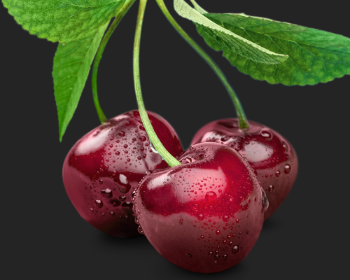
Great wine is made in the vineyardWe at Stockman's Ridge are focused on producing premium cool climate wines and believe that secret to making a great wine starts in the vineyard, by producing grapes of the highest quality using well managed ecologically sustainable practices. Owner, |
Sustainable & Minimal Input FarmingWe have followed a sustainable farming approach to our viticulture for many years. We focus on building a healthy and resilient vineyard through the use of natural products, building healthy soils and encouraging biodiversity such as 'good bugs' and cover crops. The “minimal input” methods that we use to nurture our soils, forces our vines to develop a stronger and deeper root system resulting in tougher more resilient vines that in turn produce grapes with thicker skins. This means the fruit is more naturally resistant to disease and displays added layers of flavour, complexity and vibrancy. PlantingsCombining the best of old and new world viticultural knowledge, our vineyard has been planted with rows wide enough for tractors to work and cover crops to be planted. Our vines are planted close together at only 1m metre spacings and grown to a shorter cordon only 80cm off the ground, this reduces a vine’s exposure to the sun and moderates temperature variation allowing for greater control over quality and quantity. The vines have been grown in a unilateral/single cordon style. Seasonal MaintainanceStarting from budburst in Spring we perform regular maintenance to our vines. First we bud thin to ensure the canes of the vine are growing in the correct place, then we shoot thin and position. This allows us to control quantity and shape. As the vines grow we will lift the foliage wire to elevate the canopy this is done for a few reasons such as to assist with access and improve sun exposure. Lastly we may leaf pluck this can improve air circulation, Expose the fruit to more sunlight, Improve flavour, colour, and bud fertility. HarvestThe harvest of grapes starts around March/April with the white varieties and concludes with the reds in as late as early May depending on the season. PruningOver the year we have found that pruning our vines later in the season has allowed us to miss any late frost and to push our ripening back slightly. This has been measured at almost a 2 week later budburst compared to our neighbouring vineyards. We spur prune our vines in what is known as a 2 bud spur, with 6-8 spurs per vine providing a spare cane at each spur which is often removed if not required either due to damage or if the other has better positioning. |
 |
 |
Climate & TerroirThe French word 'terroir' is used to define the individual features of a wine-growing region, including climate, geology, topography. The unique environment in which wine is produced imbues it with taste and flavour characteristic of its environment. A number of distinctive environmental features means that Orange wineries have exceptional terroir to work with, starting with its striking elevation - at 600m to 1150m above sea level, it is the highest wine region in Australia. SoilsOur vineyard is situated right in the middle of the altitude range at 800m on the north western slopes of Mt. Canobolas. It's at the mid-elevations (700-800m) Orange becomes more like the Bordeaux region of France with up to 20.5ºC mid-summer mean temperatures. Orange has more sunshine hours and fewer rain days than this classic French region. Cabernet Sauvignon, Merlot, Cabernet Franc, Sauvignon blanc and Semillon are the main varieties grown in Bordeaux. Our soils are deep well-drained clay loam red and brown Ferrosol soils (Krasnozems) derived from basalt that are red-brown. Windblown fine silt has added a silty texture to parts of the vineyard. We believe our soils are our most valuable asset and over the years have added high-quality compost to vineyard rows packed with a diversity of nutrients and trace elements, organic matter and humus, with stacks of microbes. SunshineThe Orange region claims to have one of the sunniest cool climate wine regions in Australia with over 9hrs of bright sunshine per day during the growing season (Very Sunny) with 1872 sunshine hours for October to April. Cool sunshine is vital to develop high fruit colour and maintain grape flavour. TemperatureOrange is known to have four distinct seasons with Maximum daily temperatures in January hitting 32C and min temperatures in May dropping down to -5C with snow often falling. The accumulated Growing Degree Days (GDD) above 10ºC during the growing season from October to April is 1500 officialy classifying us as Mild region, as opposed to Hot and Very Hot. Rainfall & IrrigationOur vineyard averages around 700-900mm of rainfall annually and is often quite uniform, this has allowed our vineyard to be planted 'dry' meaning they were planted without irrigation. This has forced the vines to send their roots down deep in search for water, strengthening them in the drought conditions. |


